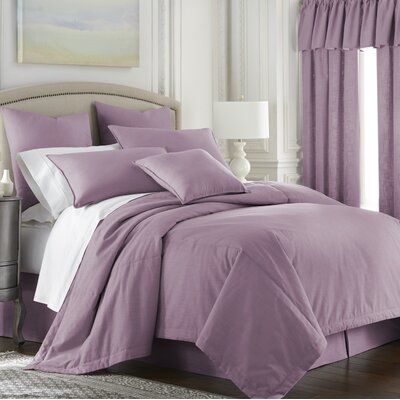
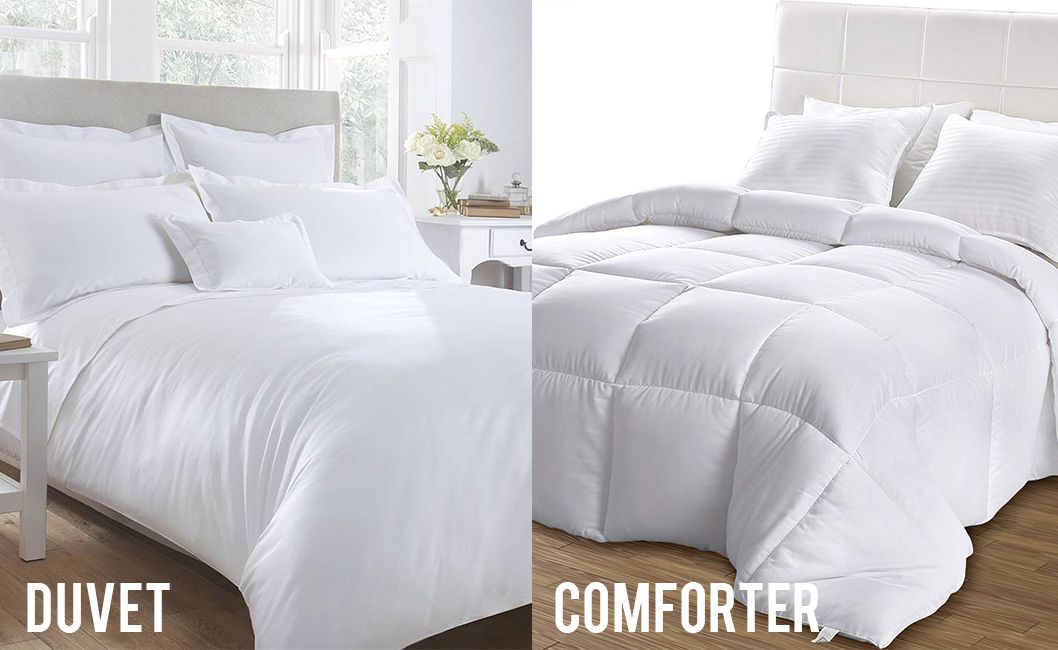
A. Duvet vs. Comforter: What’s the Difference?
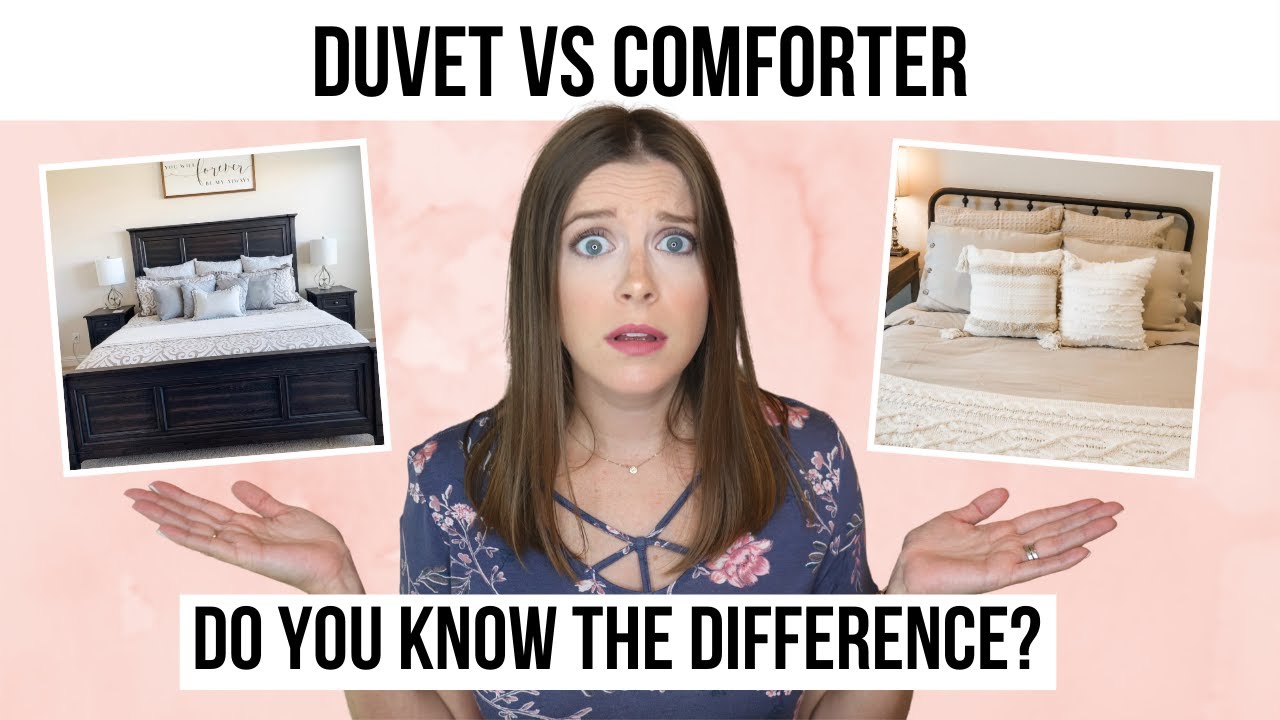
So, you are buying bedding for your new apartment and are faced with a difficult decision: should you buy a comforter or a comforter? If you don't know the difference between a duvet or a comforter, you are not alone. Many people will use these terms interchangeably. However, duvets and comforters are very different.
A Duvet is a type of bedding that is usually filled with natural or synthetic fibers - usually down, wool or feathers. A comforter works like a quilt filled with synthetic fibers. Still confused? Below is everything you need to know about duvets and comforters.
1. The main difference between a duvet and a comforter
The main difference between a duvet and a comforter is that a comforter is just a piece of bedding, while a duvet requires two separate pieces - an insert and a cover. A comforter is usually padded with evenly distributed padding, while a duvet has an insert that serves as a padding. The insert fits into the duvet cover like a pillow in a pillowcase.
A comforter is ready to use as soon as you buy it - it does not require a duvet cover or cover of any kind, but you can use a duvet cover as a comforter if you wish. Some people do this when they want to keep their comforter from getting dirty. A duvet can serve as an insert for the comforter. Although you can use a duvet cover as a duvet, it is not mandatory.
2. Duvet sizes vs. comforter sizes
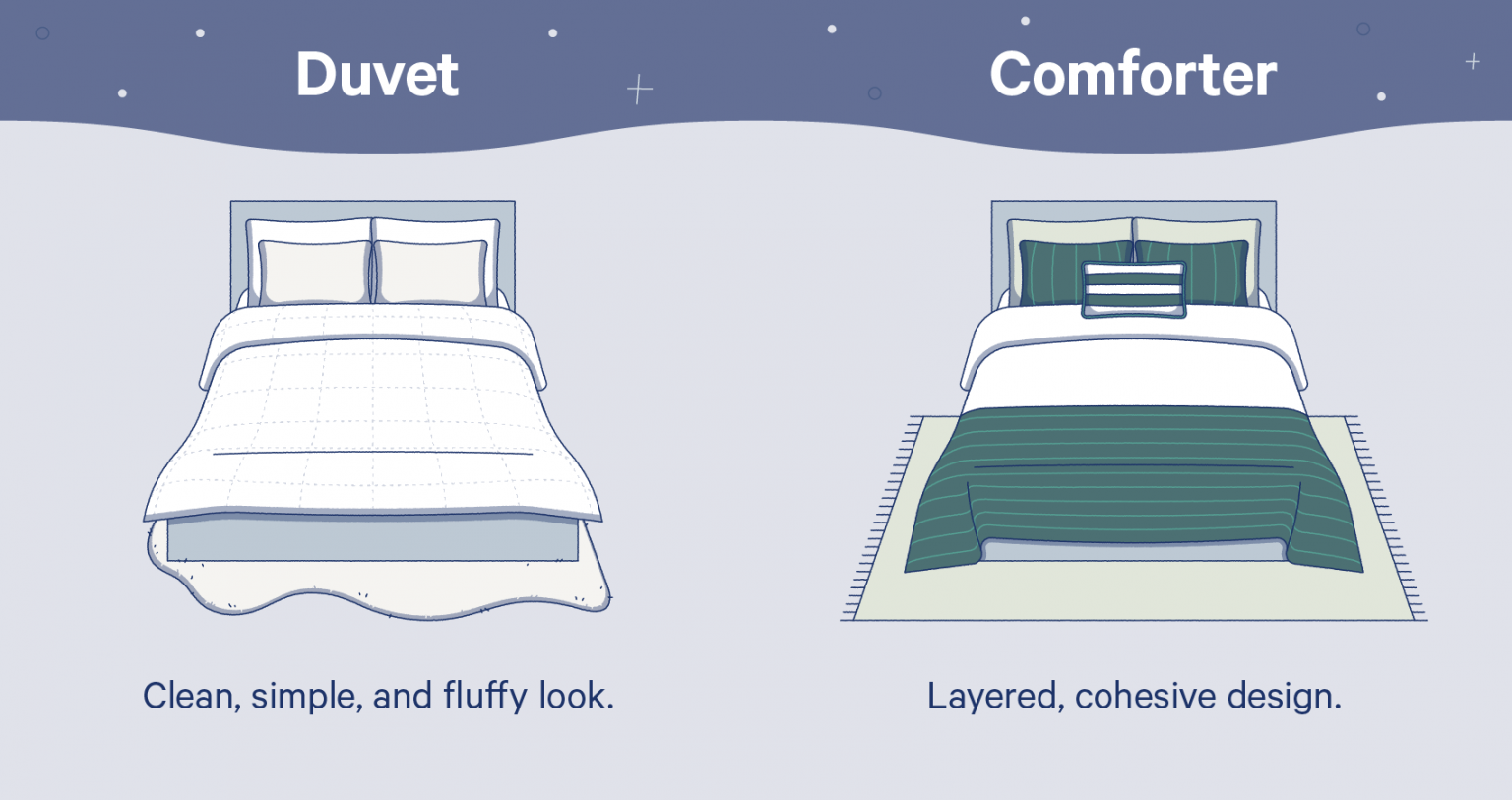
While duvets may look cuter, comforters are generally larger than duvets. They hang on the side of the bed, while the duvets usually adjust exactly to the size of the mattress.
Before buying a comforter or duvet, you should always consider the size and thickness of the mattress. Use the mattress sizes above as a starting point. If your mattress is thicker, look for a duvet or comforter that is close to the top of the recommended dimensions, or even consider dimensioning it.
3. The pros and cons of a duvet

Each bed linen has its advantages and disadvantages. What makes a duvet a popular choice is convenience and versatility.
a. Pros
- 1. Easy to make the bed.
- 2. Very easy to clean.
- 3. More versatile because you can easily change the style.
- 4. Just replace the cover and insert.
b. Cons
- 1. The filling can clump together.
- 2. It can be difficult to assemble.
Although the duvet is easy to replace if it is stained or worn, it can be difficult to assemble. Not to mention that the stuffing can pile up if not placed correctly. The PushpLinen duvet cover has a quilted pattern sewn with small clips that hold the duvet cover in place so you don't have to worry about crowding.
4. The pros and cons of a comforter
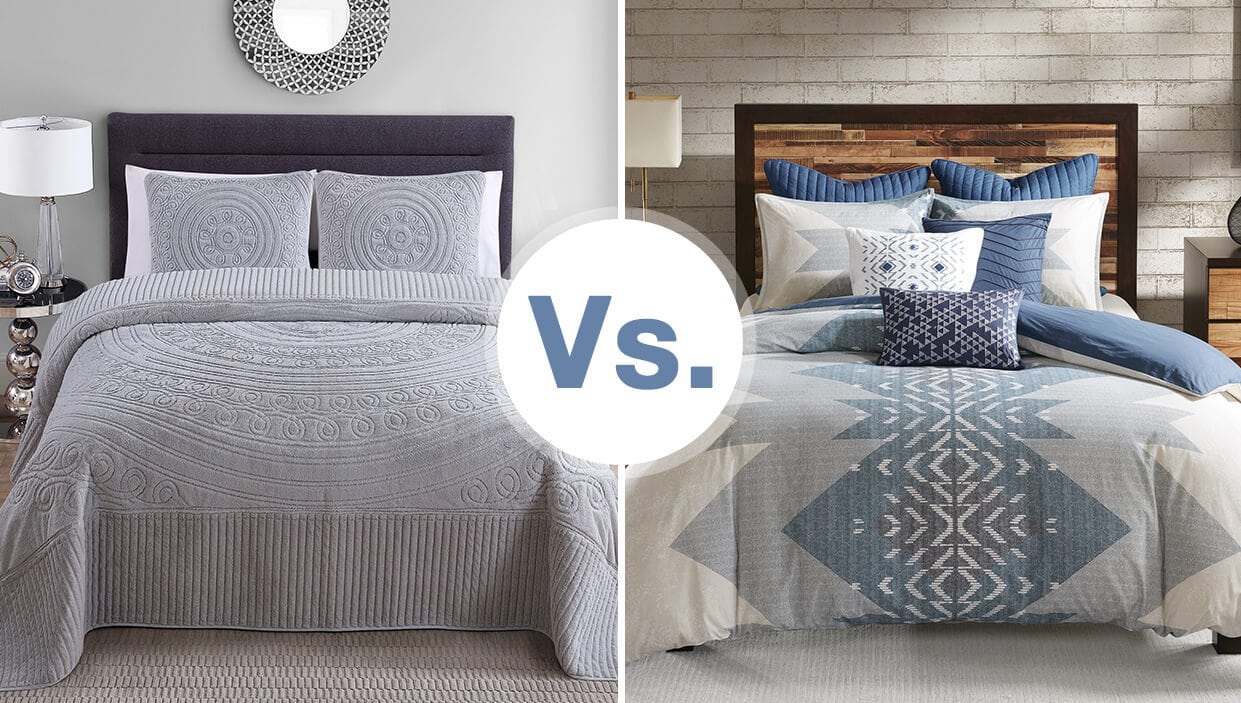
A comforter is a popular choice for those looking for a bed linen that is ready to use. Usually, a matching set is also included, so you don't have to do a lot of shopping to get additional things to buy.
a. Pros
- 1. Ready for immediate use.
- 2. It gives your bed a layered appearance.
- 3. It often comes in matching bedding sets.
- 4. The filling is integrated and distributed evenly.
b. Cons
- 1. Harder to clean.
- 2. It can be very hot.
Since the comforters come as a whole piece and are very large, most of them are only dry-cleaned. It can also get very hot for those who normally sleep with heat.
5. Other considerations
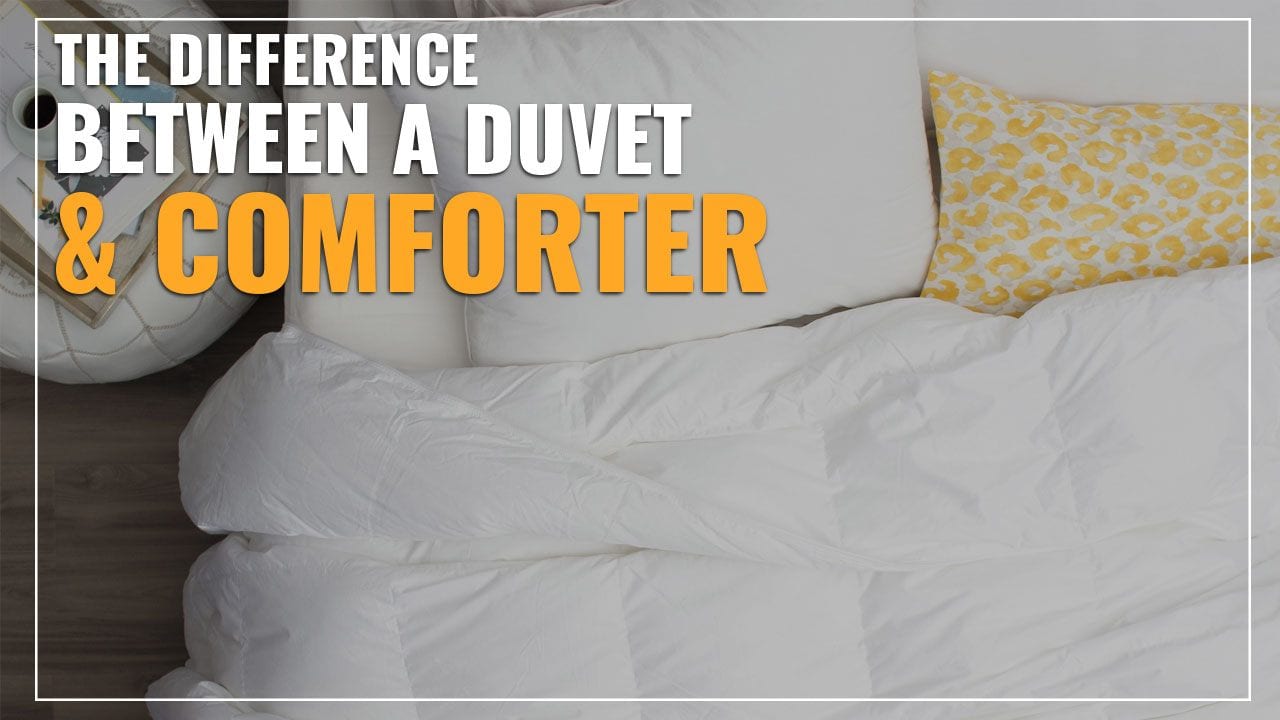
Now that you know the difference between duvet and comforter, here are some more considerations to keep in mind when shopping.
a. Price
Duvets and comforters are usually available for the same price. However, prices may vary depending on the manufacturer and the materials used. Down duvets and down comforters are more expensive than duvets and comforters filled with synthetic fibers.
As duvets come in two pieces sold separately, they can sometimes be on the more expensive side. When purchasing a duvet, make sure that both pieces are included to avoid additional costs.
b. Maintenance
If you are concerned about the difference in care between a duvet and a comforter, a duvet is easier to clean. The cover slides off immediately and can be machine washed, while the comforter is one-piece and bulky. A duvet cover can also be easily replaced if it is stained or damaged. Often, a comforter needs to be taken to a dry cleaner to be properly cleaned.
c. Personal style
When it comes to design, comforters can add a layered look to your bed. They are designed to go over the top sheet and hang on the sides. They also go well with sheets and pillowcases - creating a cohesive design. They are quick and easy to assemble and usually come in matching comforter sets.
If you want a simpler look that you can change often, a duvet is a better option. Duvets offer a cleaner design. They adjust to the size of your mattress - so there is no material hanging on the sides. They are also cuter. Many people do without the top sheet and use only a duvet and cover - this type of sleep originates in Europe.
6. Quilt versus duvet: which is better?
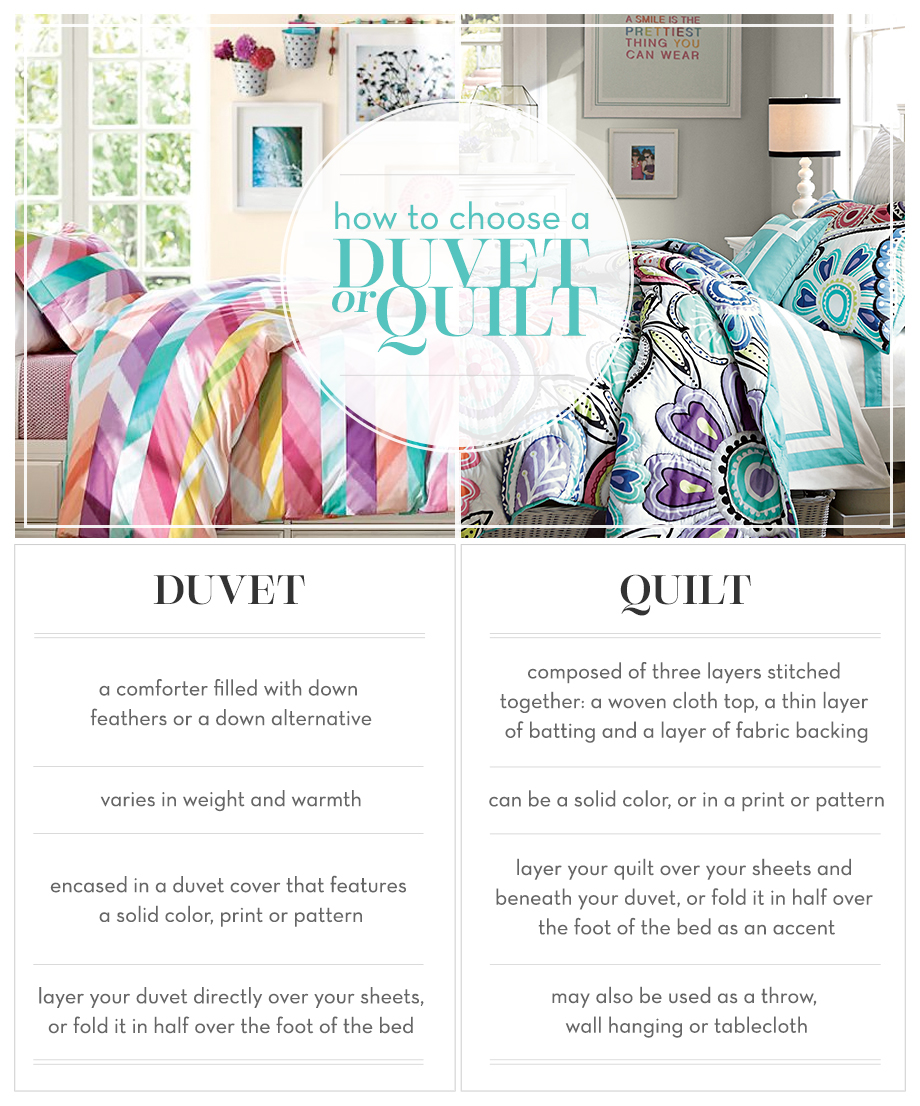
Ultimately, the decision depends on you and your personal preferences. A duvet is usually fuller and fluffy than a comforter. It comes in two pieces, as opposed to a comforter, which is just one piece and comes ready to be used after purchasing.
You must choose a comforter if:
- 1. You want something that is simple and ready to use.
- 2. You want something that comes with a combo kit.
- 3. You want a layered appearance for your bed.
You must choose a duvet if:
- 1. You want easy care.
- 2. You want versatile bedding.
- 3. You want a fuller and fluffier look on your bed.
B. Duvet vs. Comforter: What’s the Difference?
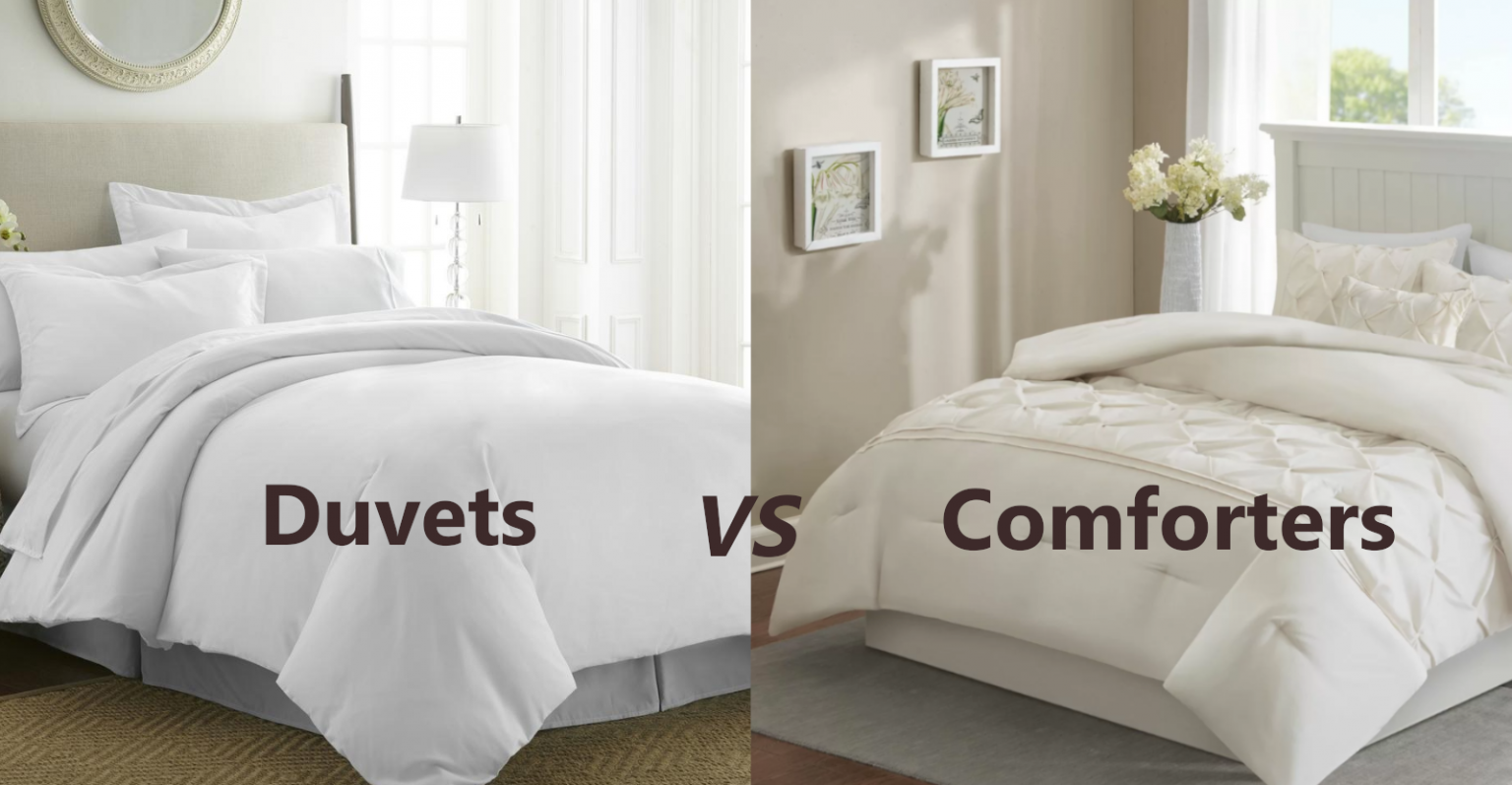
The world of bedding accessories can be confusing, but we don't want you to lose any sleep over it. Learn the difference between duvets and comforters and duvet covers so that you can sleep comfortably.
You may have thought that a bedspread was just a bedspread, but our research proves otherwise. When discussing a duvet or comforter, there are some important differences that you should be aware of before making a purchase.
1. Duvet versus comforter
Whether you prefer your bed to look like a big white cloud or want to liven things up with bright colors or patterns, your bedding offers an easy way to make your own bed. What is a duvet? What is a duvet? What is the difference between a comforter and a comforter? Do the duvet covers work with duvets only? And what the hell is a comforter?
2. Main difference between a duvet and a duvet cover
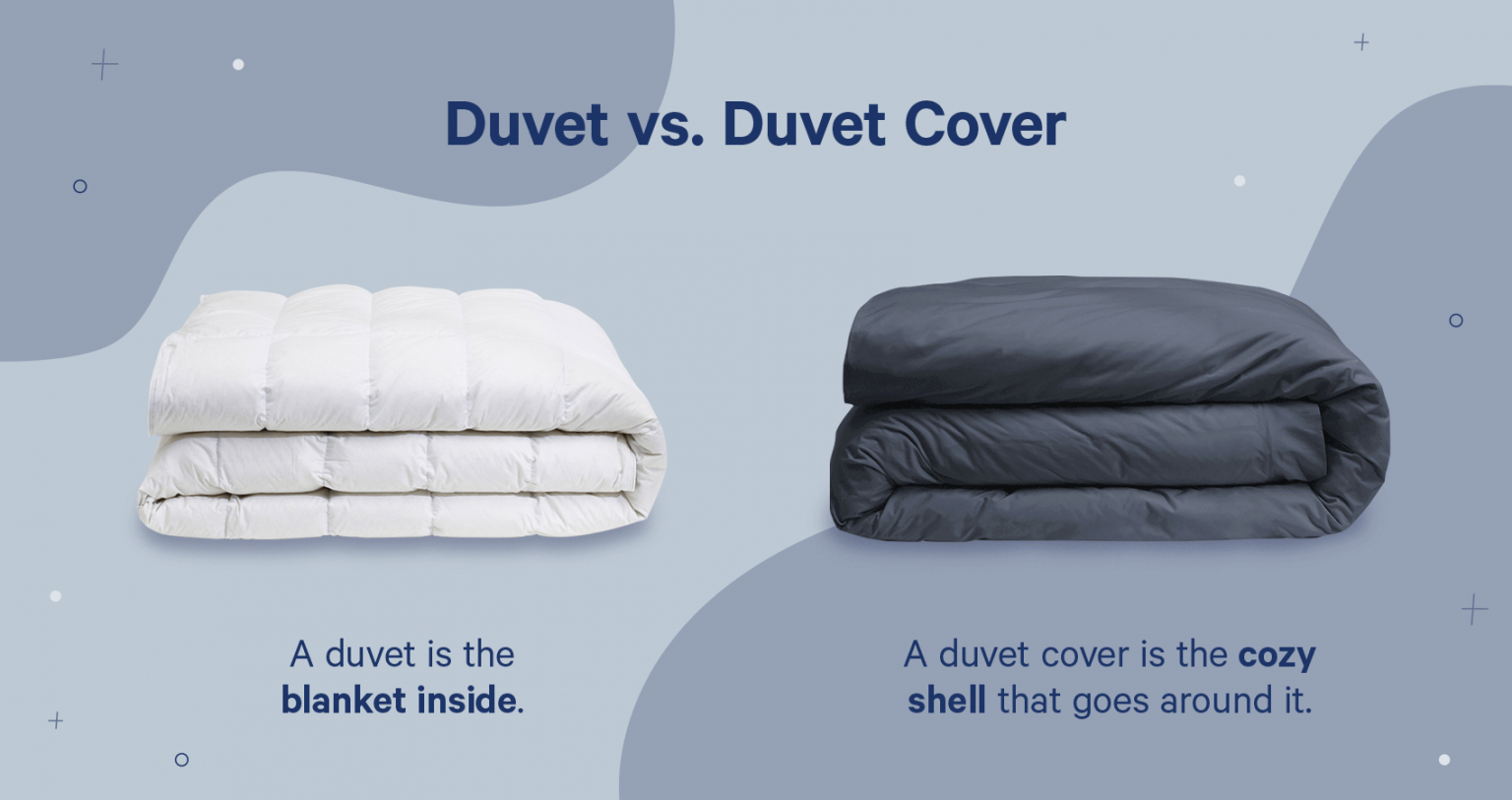
There are some important differences between a duvet and a comforter. First, a comforter is made as is - it is a complete quilted piece. A duvet, on the other hand, must be used with a duvet cover, coverlet or top quilt. This makes a comforter a little easier to use, but duvets are easier to clean. Just remove the cover and throw it in the laundry - there is no bulky comforter to unbalance your washing machine.
A duvet can also keep you warm, as it was originally designed to be used without a top sheet or extra blankets. You can add them if you want, as many people do. This is not to say that there are no similarities between duvets and comforters. Both offer a soft, thick blanket to keep you warm. Both are available in different thicknesses and materials for temperature control. And both add a lot to the aesthetics of your bed. So choose a duvet cover or comforter that matches the look you want.
3. What is a duvet?
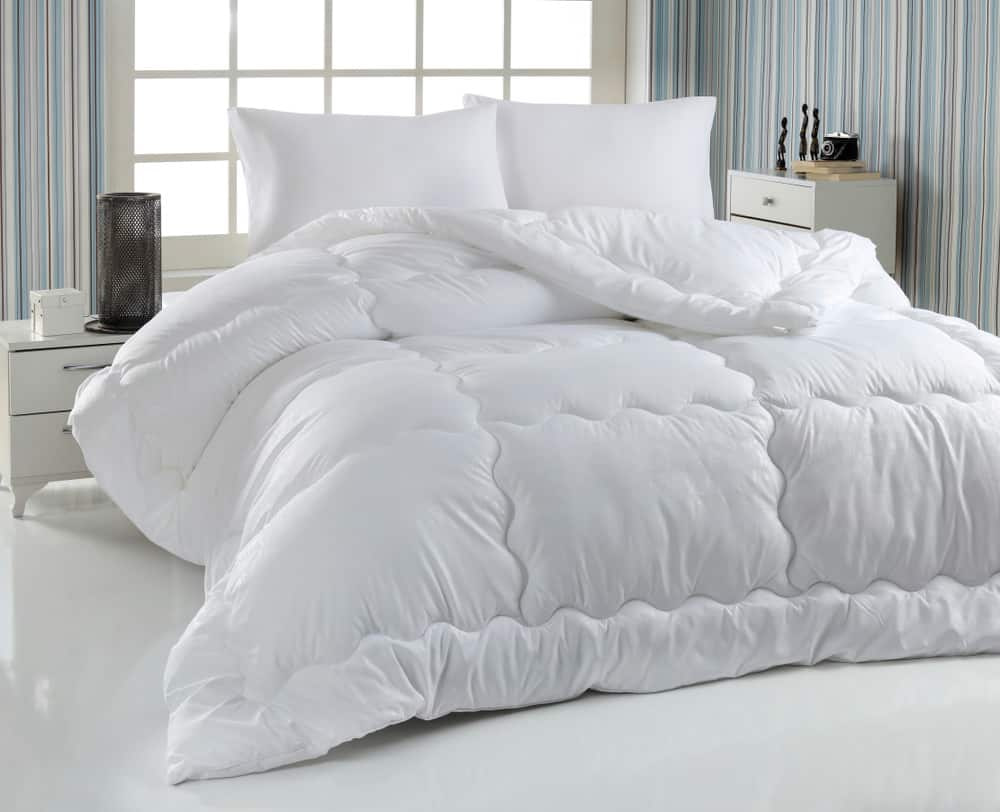
So ... what is a duvet? It may seem like a simple question, but the answer is somewhat confusing. A duvet is a soft blanket that is usually filled with synthetic or down fibers, such as feathers or wool. Unlike comforters, duvets should not be padded or sewn to make them look less "finished". Duvets are meant to be an insert and are sold separately from duvet covers or coverlets. That said, you can combine them with other beds without being tied to an entire set, as you would with a comforter. In general, duvets are warm enough that you don't have to use extra sheets or blankets if you don't want to.
That's why duvets are great if you hate spending a lot of time making a bed or playing with a top sheet, because you can easily remove and wash the duvet cover. Duvets themselves are usually dry-cleaned (or at least difficult to machine wash), which is more expensive and time-consuming. Remember that you can still use sheets, as they are still easier to wash than a duvet cover.
4. What is a duvet cover?
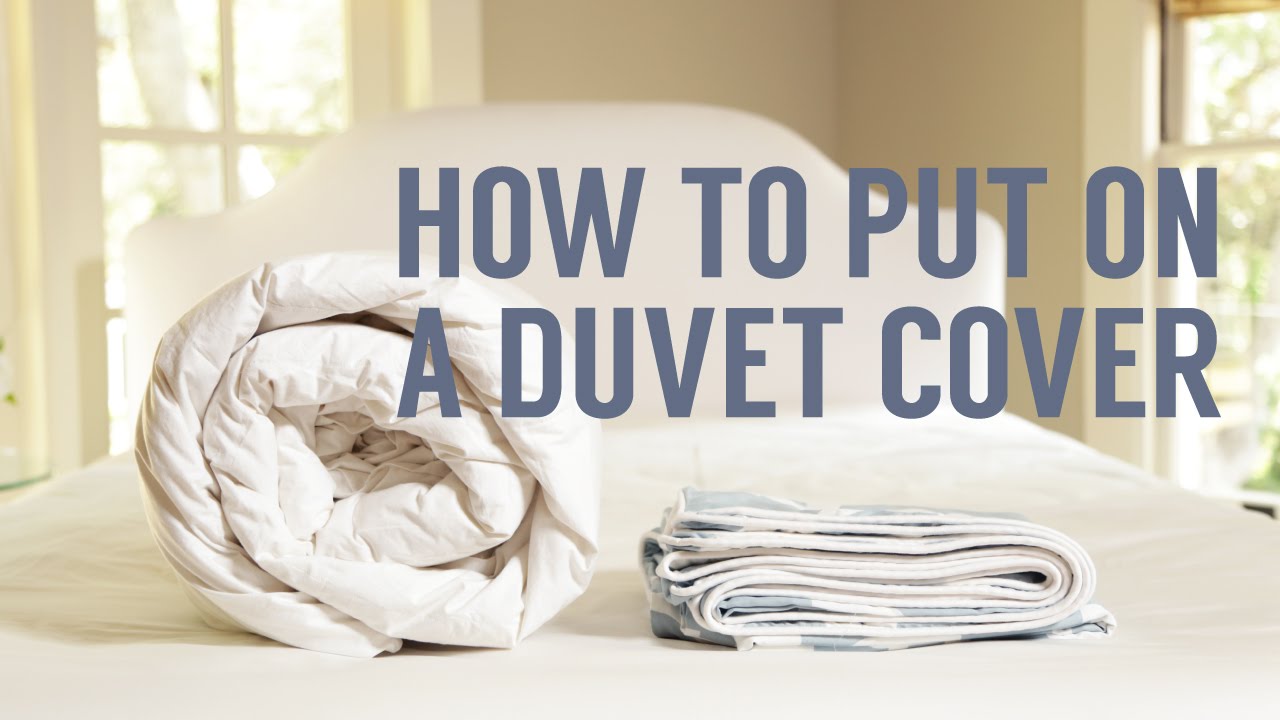
You may be wondering what a duvet cover is and how to use it? A duvet cover is for a duvet as a pillow case is for a pillow. Simply slide the duvet onto the duvet cover and close the end with the buttons, ties or zipper attached. They are designed for easy removal and washing, so you don't have to worry about washing and drying the thick comforter.
Duvet covers must also be interchangeable, so you can easily decorate your bed without having to buy a new set of sheets. They can also be used with comforters. But be sure to check the size. If you are using a duvet cover, you can still use sheets, but some consider them unnecessary. It's up to you - we're not here to tell you how to make your bed.
a. What Is A Duvet Coverlet?
A duvet coverlet is a non-reversible blanket, usually quilted or woven. It is mainly used as a decorative layer to cover a bedspread or thick bedspread, but cannot be attached. They are often used in hotel room beds to add an aesthetic touch. However, they are not limited to beds. They can also be used on sofas or chairs.
5. What is a Comforter?

A comforter is a thick, fluffy decorative blanket that is used as the bed cover. Additional thin sheets or blankets can be used under them. Comforters are usually filled with synthetic fiber materials, such as polyester or cotton blends, and are usually quilted or sewn in a specific pattern so that the material is distributed in a safe and even manner.
Comforters are usually sold in bedding sets or in a bag with other matching items, such as sheets and pillowcases, all made for the same size of bedding. They must be the last piece and therefore must not be covered with anything or combined with additional accessories. This makes decorating your bed very easy. Comforters are also very easy to wash and can be hung up to dry or machine dried in a low, soft environment.
6. How to Use a Duvet Cover
If you've never used a duvet cover, this is easy to learn. That's how it works :-
- 1. Open the package and turn the duvet cover with the opening facing the foot of the bed.
- 2. Place the duvet in the cover.
- 3. Starting from the top, wrap the cover and duvet cover in one direction towards the foot of the bed.
- 4. After creating the bundle, turn the lid on the sides of the bundle.
- 5. Close the duvet cover with the buttons, loops or zipper on the cover.
- 6. Unroll the bundle!
7. How to wash a comforter or duvet
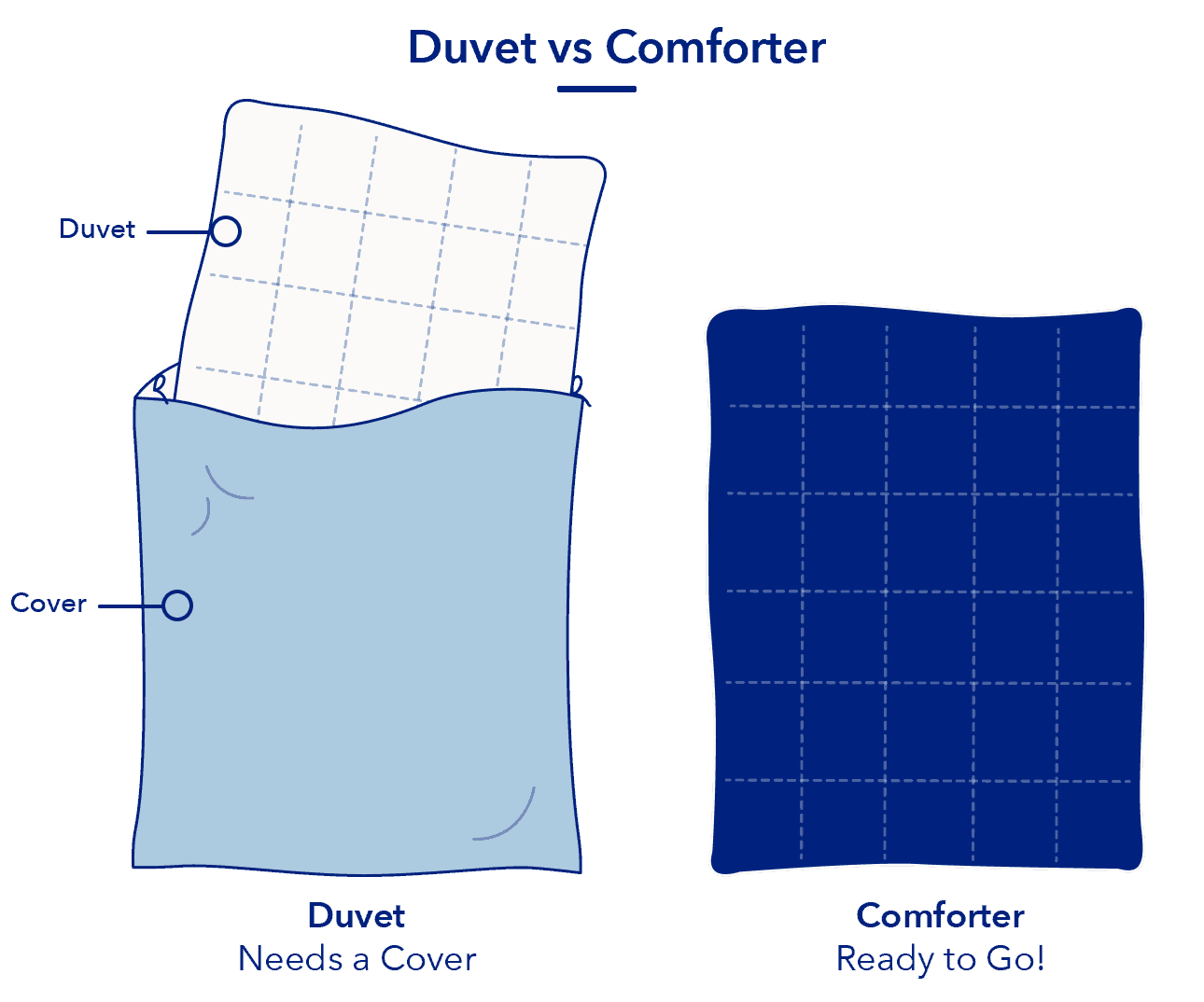
In terms of cleanliness, there is a small difference between the washing techniques of a duvet and a comforter. Note that these are general guidelines and you should check the label on your duvet or comforter before washing.
Since comforters come in a variety of fabrics, it is especially important to follow the washing instructions on the comforter's label and packaging. Most comforters can be washed in your washing machine under certain heat settings. However, some require dry cleaning.
Duvets, on the other hand, are often dry-cleaned. However, if you use a cover over the duvet, it is easy to remove and throw it in the washing machine. You shouldn't have to clean the duvet frequently.
8. Duvet vs. comforter: pros and cons

a. Duvet pros
- 1. Light fabrics make them cuter in texture
- 2. Easy to clean
- 3. Refresh your bed's appearance with ease
b. Duvet Cons
- 1. Does not offer as much protection (overhang) as a comforter
- 2. May tend to pile up on the cover
- 3. Sometimes difficult to assemble
a. Comforter pros
- 1. No assembly required
- 2. Keeps its shape
- 3. Ideal for decoration, as they hang more on the bed than duvets
b. Comforter cons
- 1. Harder to clean
- 2. They tend to level off over time
- 3. They may not be warm enough in the winter months
9. How are a duvet and a comforter similar?
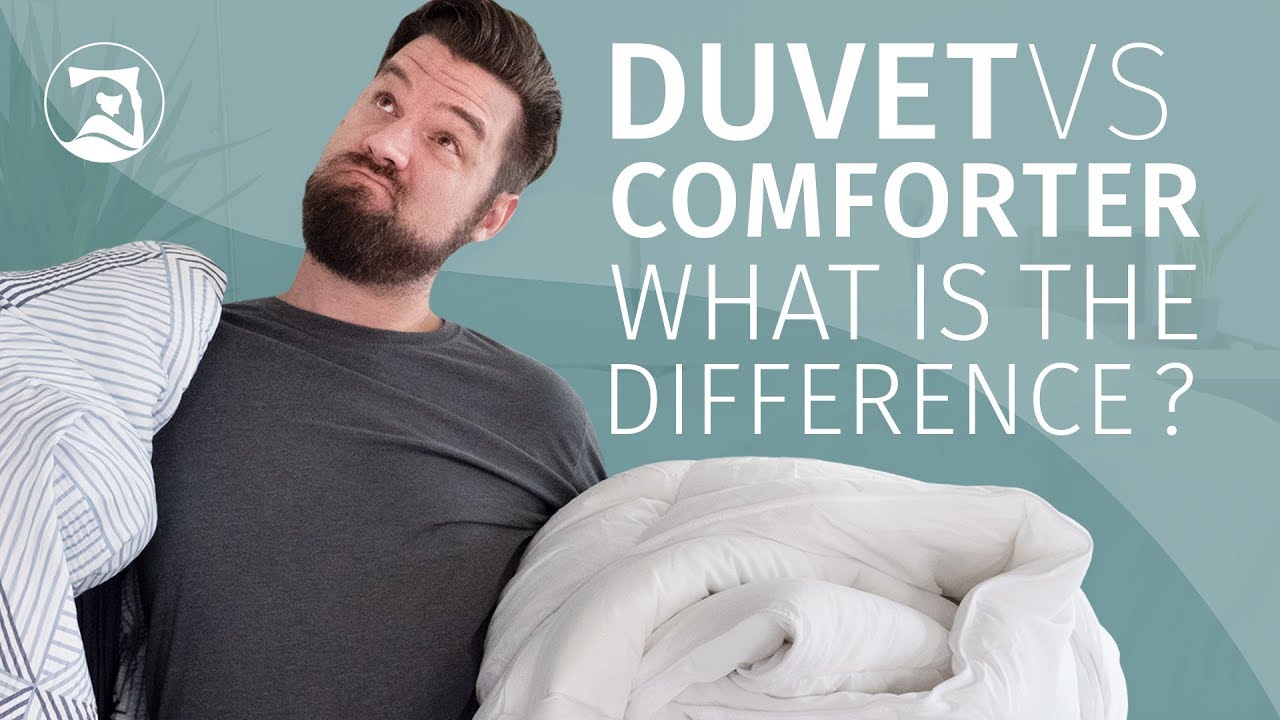
The similarities between the two are that they both act like the thick, fluffy blanket on your bed. Both should be aesthetically pleasing to you (with or without a cover), as they are probably an important visual aid.
The difference between these two bedding products is that a comforter should be used as is, and a duvet should be used with a duvet cover, duvet coverlet or top duvet quilt. A duvet can also keep you warm as it can be used without additional sheets or blankets. However, you can also add them if you wish.



